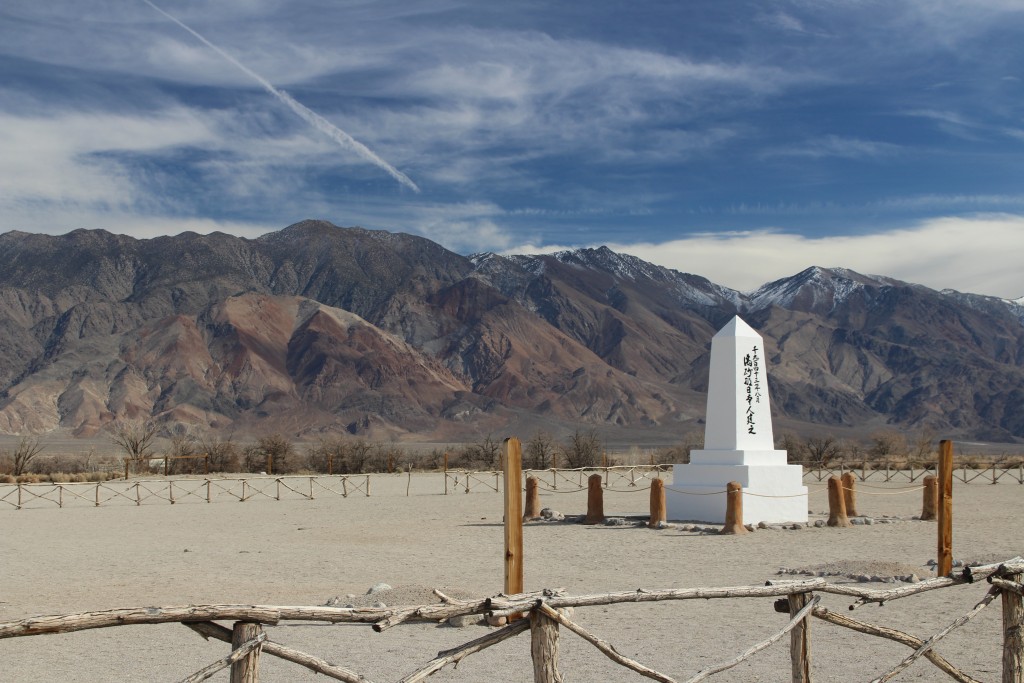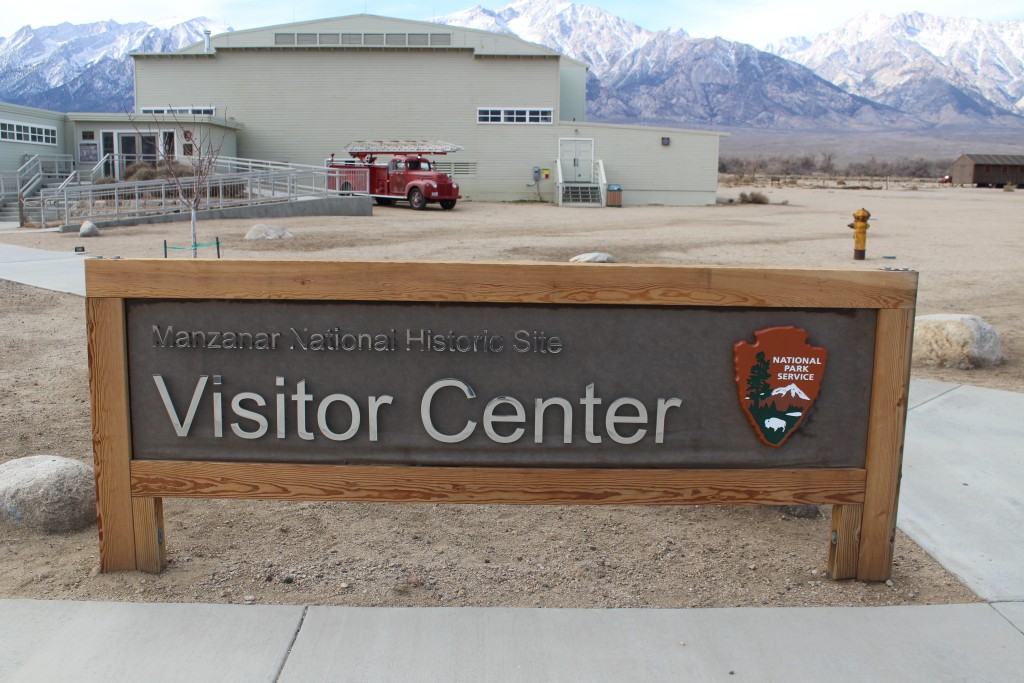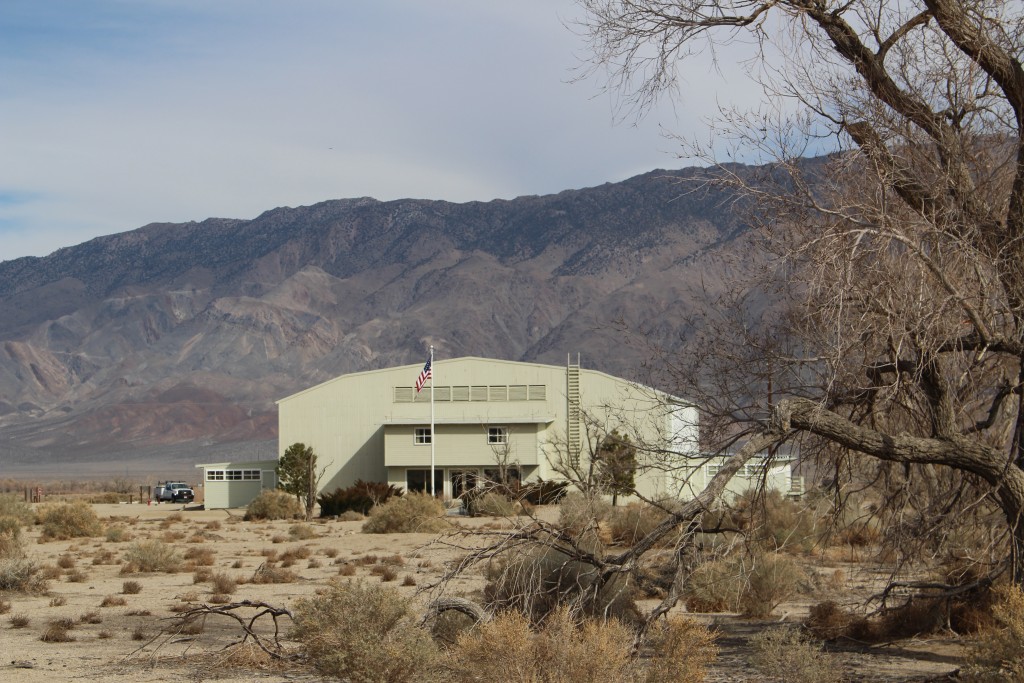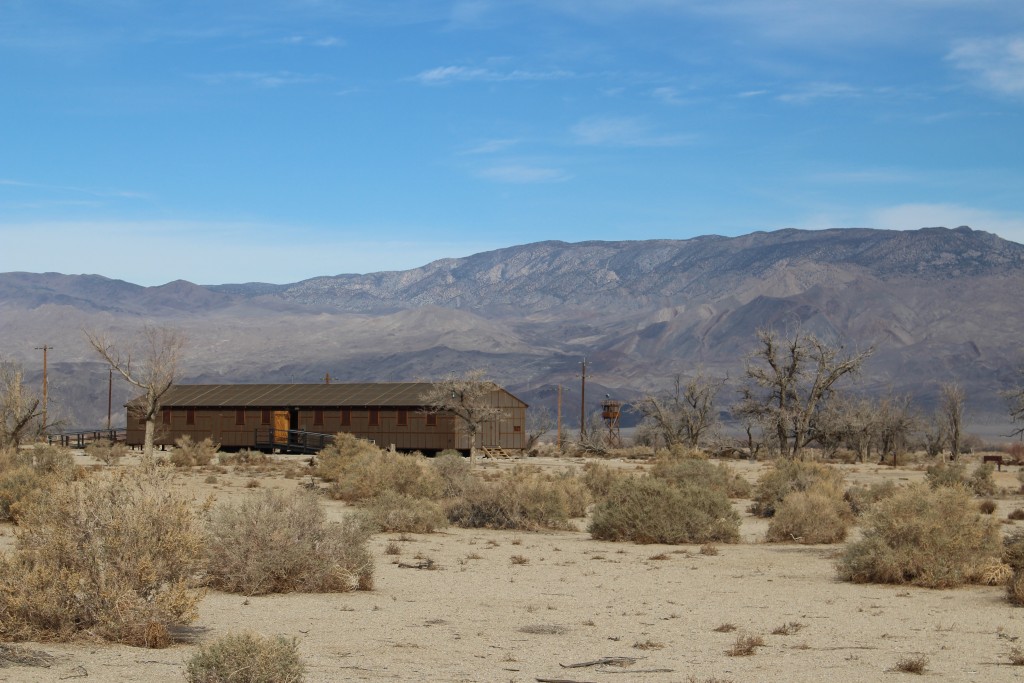
On one of our off days last week Tom and I made a long loop around the northern part of Death Valley and drove to Manzanar. We headed south and then west over Towne Pass and Father Crowley Pass, then north on I-395 through the Owens Valley. The Owens Valley was rich farming area for Paiute Indians through 1900 when it was taken over by white settlers and the Paiute moved to reservations. Then the city of Los Angeles bought the river (around 1913) and diverted it 200 miles for a water supply. Now the valley is arid with frequent dust storms.
So a valley with such a turbulent past seems a fitting place to put a WWII Japanese internment camp. Shortly after the bombing of Pearl Harbor, the US Government decided to relocate 110,000 Japanese Americans from the west coast states. They made them leave their homes and businesses, usually with less than a week’s notice, and move to military-style bases in the middle of deserts and swamps. Most of these people were American Citizens of Japanese ancestry and so they went peacefully, deciding it was what they could do for the war effort. Some of them were first generation immigrants who had not been allowed to become naturalized citizens because of racial prejudice.
The relocated families lived in extremely cramped quarters. Every “family” of 8 people got an apartment that was 20 feet by 25 feet, four apartments per barrack, 14 barracks per block, with 36 blocks at Manazanar. None of these people had been charged with any kind of illegal act, yet their homes and belongings were taken away from them in direct violation of the Constitution. None of them were ever charged with any act of spying or espionage. Supposedly they were held for “national safety” reasons during wartime.
Despite the inhospitable climate and hostile circumstances, the Japanese Americans at Manzanar created lives for themselves during the war years. They set up a city government, made sure that the adults had jobs and the children went to school. Students graduated from high school and some went off to college in eastern schools. They had sports teams and judo schools. They went to church or temple (Buddhist) on Sundays. In short, they got on with the business of living.
Visiting Manzanar was very moving for me. I am always shocked at our Caucasian indifference to the suffering we inflict on others who are different. May we learn from our mistakes and never willingly inflict this kind of suffering on those who are “different” again.




One comment